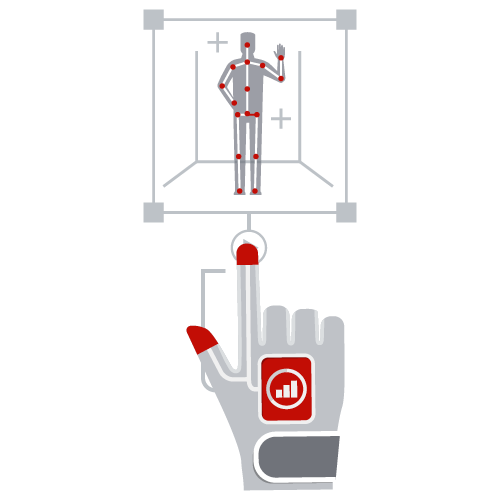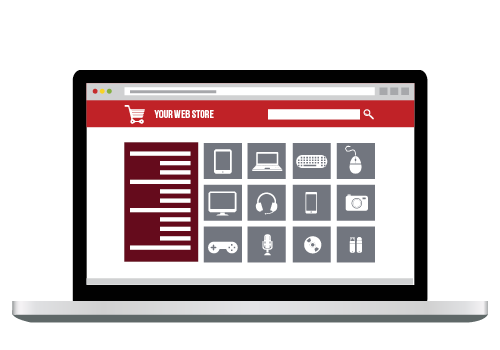

From skills gaps to servitization, manufacturers face many challenges in their quest to improve efficiency. More and more are embracing digitization using three key technologies to stay competitive and continue making an impact in the manufacturing industry.
In previous blogs, we already covered integrated cloud-based systems and increasingly complex industrial robots. But these are far from the only ways the manufacturing industry is using new technological developments to optimize their operations. As digitization becomes the norm and continues to shape the future of the industry, manufacturers have access to increasingly advanced technologies to help them remain competitive.
Here are three manufacturing industry technology trends that help forward-thinking companies to improve efficiency, save money, and ensure their organization is future proof.

1. Simulation: Optimize training and development
Simulation tools let manufacturers test and explore new systems without having to go to the effort — or run the risk — of setting up a new system without knowing whether it will work. Simulation has been used in the manufacturing industry as far back as the 1960s, and that’s not surprising considering the benefits it offers.
Error indication and prevention
Whether your company is looking to design an all-new system or improve upon a current one, simulation offers a cost-effective way to find the most efficient new approach. In fact, research indicates that identifying and correcting errors in an offline simulation environment can cost up to 100 times less than in an online plant environment.
This alone can have a huge impact on the manufacturing industry, but there are even more ways that manufacturers can benefit from simulation technology.
Operation training simulators
The same report indicates Operator Training Simulators (OTS) are one of the best ways to train new staff and make sure that more senior operators maintain their knowledge and skill levels. This is because using an OTS lets operators explore and master the functionality of the process automation system in its entirety, without the pressure of having to control the plant itself.
By moving system optimization and system training into a virtual environment, manufacturers can actively work on the efficiency of their systems and the quality of their operators, without running the risk of disrupting the plant.

2. AR and VR: Improve maintenance operations
Virtual reality (VR) and augmented reality (AR) have been making waves in the entertainment industry for a while now. Manufacturers are also using these technologies to their advantage when it comes to training staff and even improving plant maintenance.
Safer working conditions
Virtual reality lets you take simulation a step further than calculating possible outcomes of new setups. According to a report by Deloitte, creating an immersive graphical environment lets manufacturers replicate maintenance and repair control scenarios in virtual environments.
Simulating processes and environments for training purposes makes it possible to train employees without subjecting them to potentially dangerous situations until they have the skills and expertise required to safely perform their duties.
Increased efficiency
Contrary to virtual reality, which is 100% computer generated, augmented reality overlays the physical world with computer graphics. Here the focus isn’t on removing employees from working environments but rather using digitization to improve working environments in manufacturing plants to help employees perform tasks more efficiently.
AR helps manufacturers achieve this by granting fast access to data on location. Users can retrieve all the information they need to service a machine simply by scanning it. By ensuring your specialists always have access to pertinent information, you can reduce maintenance time and therefore also production downtime.

3. E-commerce: Streamline commercial operations
Ensuring that your product is produced as efficiently as possible is important — but so is optimizing the commercial side of your organization. That’s where the e-commerce trend comes into play.
Streamlining with EDIEDI has long been used by the manufacturing industry to digitize and streamline the ordering process. Orders are automatically placed at specific intervals, without the need for manual action from purchasers or sales staff. This not only saves time when it comes to administration, but it also minimizes the risk of human error.
However, EDI is only really feasible for large, recurring orders placed by clients who have the means to implement this system. It does not work for smaller clients, or those that only need to place incidental orders. Nor does it allow clients to browse your catalog of products.
Increased customer ease with web stores
A web store can provide the solution. By creating a digital catalog of your products online, you can let all your clients — even those that are smaller or don’t place orders on a regular basis — make their purchases whenever they wish, without having to rely on the availability of your sales staff.
The benefits of ERP integrationIntegrating your web store with your ERP system offers even more benefits for both manufacturers and their clients. A real-time connection between these programs ensures that your web store always reflects up-to-date product and client account information. ERP integration also means that orders placed digitally do not have to be manually rekeyed into your ERP system — again minimizing the risk of human error.
The convenience this provides for both you and your clients is clear. However, the gains in efficiency shouldn’t be underestimated either. Through smart use of technology, you can achieve the same level of efficiency in your commercial processes as in your production processes — giving you the edge you need to thrive in today’s dynamic manufacturing industry.
Integrated e-commerce for manufacturers
Sana Commerce is an e-commerce solution designed to integrate seamlessly with Dynamics and SAP ERP systems. This means that you can use product, inventory and client information to create a powerful, user-friendly online sales channel.
Benefits of Sana integrated e-commerce for manufacturers:
- Powerful search options help your clients find their desired product among thousands of items.
- Detailed product data from your ERP is displayed to help clients select the right product for their needs.
- Prices are calculated by your ERP and displayed directly in your web store, including all customer-specific pricing and any discounts you have configured.
All of this is made possible by the seamless integration between Sana Commerce and your ERP, the heart of your IT landscape.
Learn more about the technology shaping the future of manufacturing
These aren’t the only digitization developments shaping the future of the manufacturing industry. Download your free copy of our latest guide, Supply Chain and E-Commerce: The Essentials Guide of Manufacturers, Distributors, and Wholesalers.

Supply chain and e-commerce:
Get the essential guide for manufacturers, distributors and wholesalers



